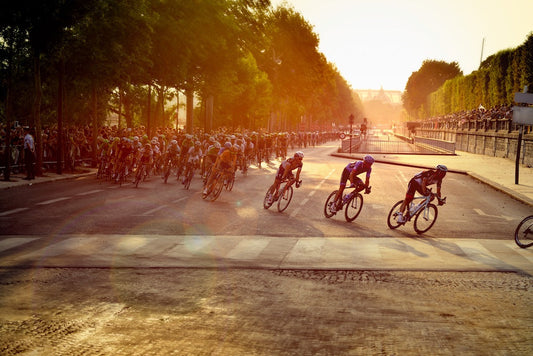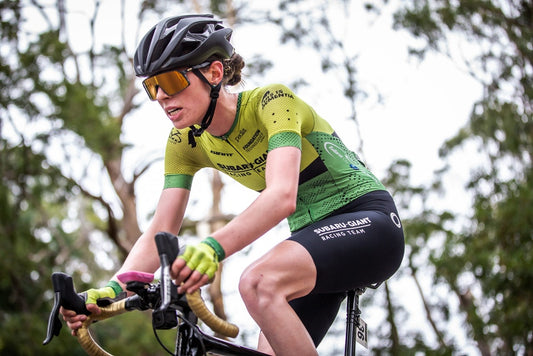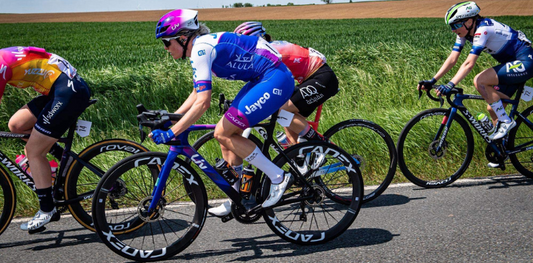The Impact of Dehydration on Sports Performance
Unleash Your Sports Potential: Beat Dehydration
Published: 17-07-2019
Dehydration can significantly impact sports performance by affecting power output, skill execution and endurance. Blood plasma decreases, causing blood to thicken and reducing the body's ability to carry oxygen, leading to a decline in performance. Explore how to minimise dehydration's impact and optimise performance with PREPD, a hydration enhancer proven to reduce dehydration.

Dehydration and Performance
The negative impact of dehydration on sports performance can be significant even at low levels of dehydration (1.5% bodyweight loss – Moquin et al 2000) and affects a wide range of key performance factors from power output to skill execution. While most people are broadly aware of the importance of maintaining good hydration, the far-reaching impact of dehydration on sports performance is often underestimated.
For athletes looking to improve their performance, understanding their own hydration requirements and minimising dehydration is a critical part of preparation for peak performance in training and competition. When dehydration sets in, it is extremely difficult to rehydrate fast enough to avoid performance deterioration.

How dehydration affects the body:
During moderate to intense exertion, typical athlete sweat rates range from 1-3 litres per hour. This means that for most people, when exerting for an hour or more, fluid loss is likely to be near or over 2% of body mass loss (BML) leading to physiological responses from the body to combat dehydration.
As the body sweats to cool down during sport, the resulting fluid loss decreases blood plasma (the fluid part of the blood), causing the blood to thicken. As the blood thickens, its ability to carry oxygen decreases, putting extra pressure on the heart to work harder to pump oxygen and glucose (fuel) to the muscles. This in turn has a flow-on effect of increasing the body’s core temperature which further impairs the body’s ability to maintain water balance. Performance decline is inevitable as the body needs to work harder to achieve the same output and uses fuel less efficiently, which increases the rate of fatigue (Armstrong et al. 1985; Craig and Cummings 1966; Maughan 1991; Sawka and Pandolf 1990).

Dehydration decreases power output and endurance performance.
Dehydration of over 2% BML has been shown to reduce lactate threshold, lower absolute power output and significantly decrease time to exhaustion (Moquin et al 2000). Additional evidence includes the following studies.
- Cycling time trial performance was 13% slower at 2-3% BML (Sprenger et al 2015)
- Cycling sprint to exhaustion time was 29% lower at 2.5% BML (Ebert et al 2007) and has even been reported to reduce by 30% at only 1.8% BML (Walsh et al 1994).
- Maximal aerobic power (VO2max) was 5% lower at 3% BML (Pinchan et all 1988).
- BML as low as 1.6% can slow running performance by 7% (Armstrong et al 1985)
- Even when drinking to thirst, athletes can experience over 2% BML resulting in a 7% decrease in cycling power output (Adams et al 2018).
Dehydration impairs decision making and skill execution.
Furthermore, growing evidence indicates that dehydration over 2% BML inhibits cognitive function (Wittbrodt et al 2018) and impairs skill execution.
- Tennis serve accuracy reduced by 30% at 1.5% BML (Davey et al 2002)
- Progressive deterioration of basketball skill performance as dehydration increased over 2% BML (Baker et al 2007).
- Cricket bowling accuracy reduced by 17% at under 3% BML (Devlin et al 2001).
With many other similar studies supporting these results, we can expect significant dehydration to impact skill execution in all major ball sports including Australian rules football, rugby, soccer, hockey and netball.

Dehydration causes fatigue.
The crippling sensation of fatigue experienced by athletes towards the end of a long training session or in competition is caused as much by dehydration as from depletion of fuel stores. Dehydration during exercise can have a cascading effect on the body’s responses to continued exertion and energy requirements.
As dehydration increases, it becomes harder for the athlete to catch up replacing the fluid they have lost. As the blood thickens with dehydration and the muscles need to work harder to pump blood around the body, lactic acid build up becomes more concentrated and athlete energy requirements increase. Energy replacement is typically addressed with high-glucose energy foods or drinks, which can actually reduce the body’s capacity for hydration. This further exacerbates the severity of dehydration and in turn negatively impacts on muscle fatigue, cramping and declining athletic performance (Murray 2007). Read more about the pros and cons of different sports electrolyte drinks here.
Boosting athlete's performance with better hydration.
Both professional and serious recreational athletes are driven by the need to find an extra edge over their competition. In all sports, the quality and intensity of training and preparation is fundamental to optimal performance in competition. Those looking for a competitive edge need to ensure they can minimise dehydration to perform at their peak longer and recover sooner.
Until recently, we have not seen any substantial advances in hydration technology since sports drinks were invented over fifty years ago. PREPD changes this by significantly increasing the absorption of all fluids consumed by athletes, in order to reduce dehydration and maintain performance. Backed by over 20 years of research and testing, PREPD is a hydration enhancer consumed pre- and post-exercise, and is proven to boost the absorption of leading sports drinks and water (O’Connell et al 2018). Using patent-pending resistant starch formulations, PREPD is designed to enhance fluid absorption in the gut, which has an untapped potential to absorb up to 5L of fluid per day. To find out more about how PREPD works, read the science here.




